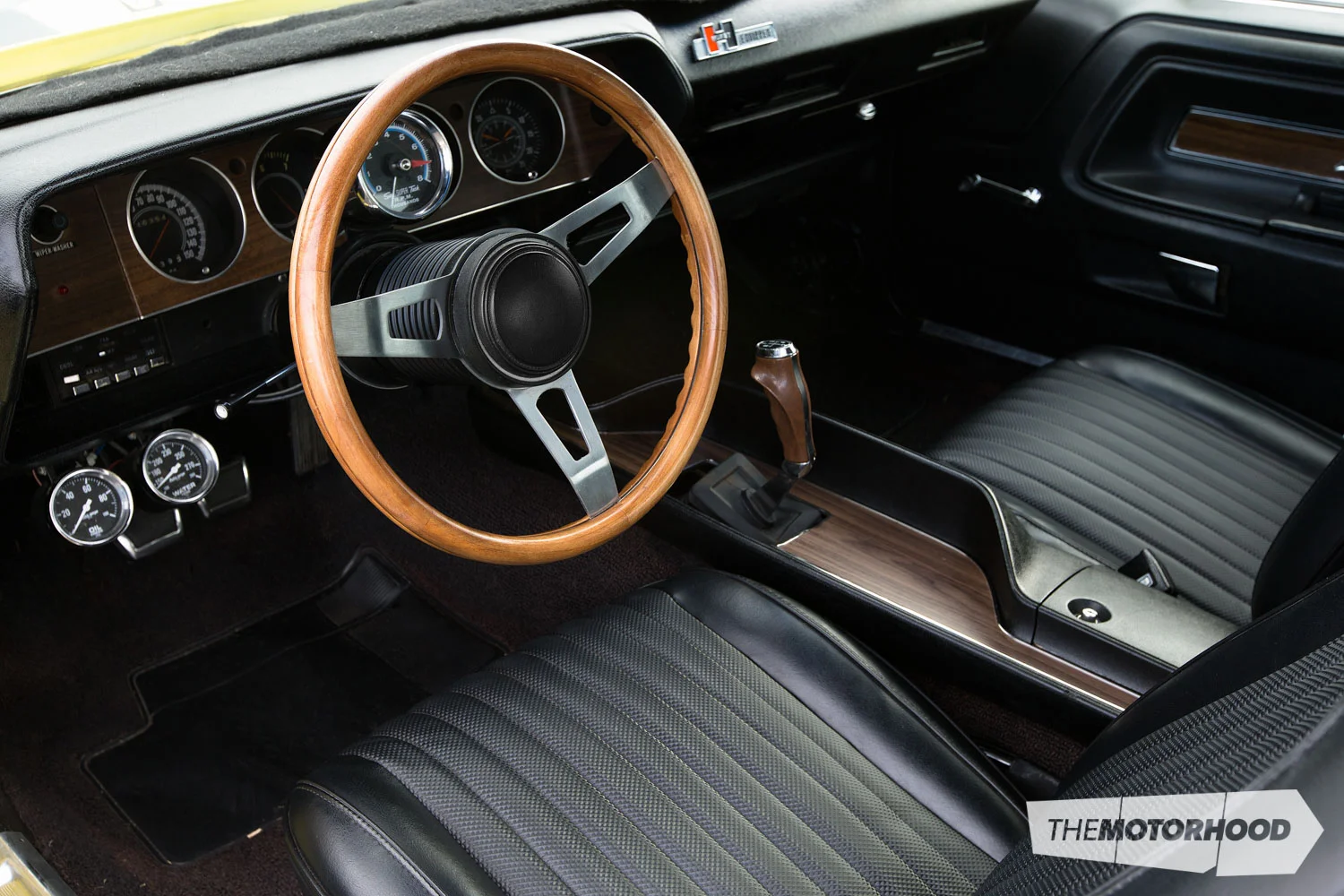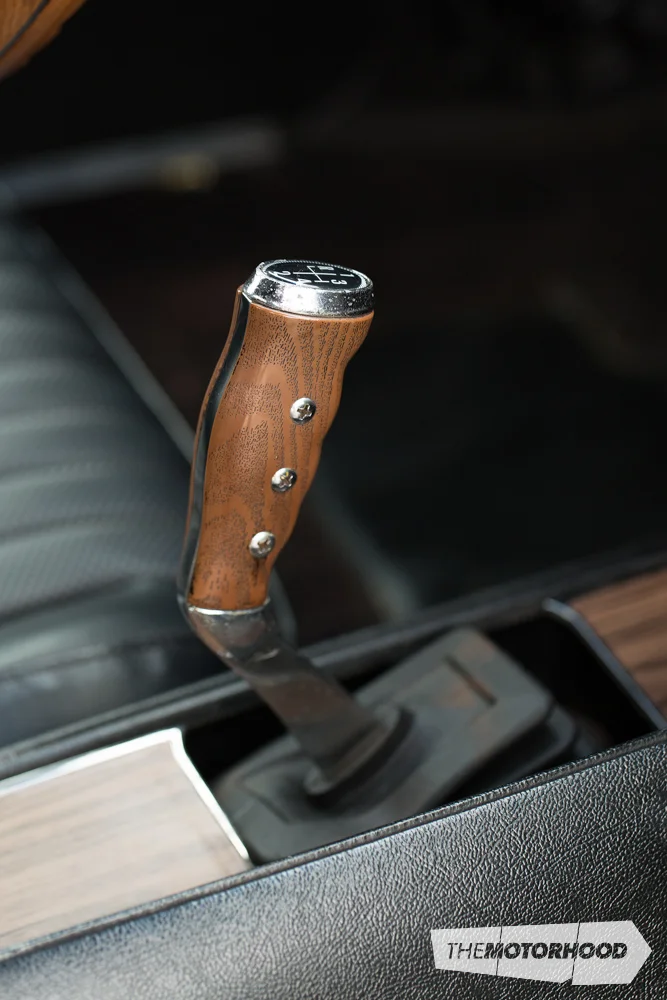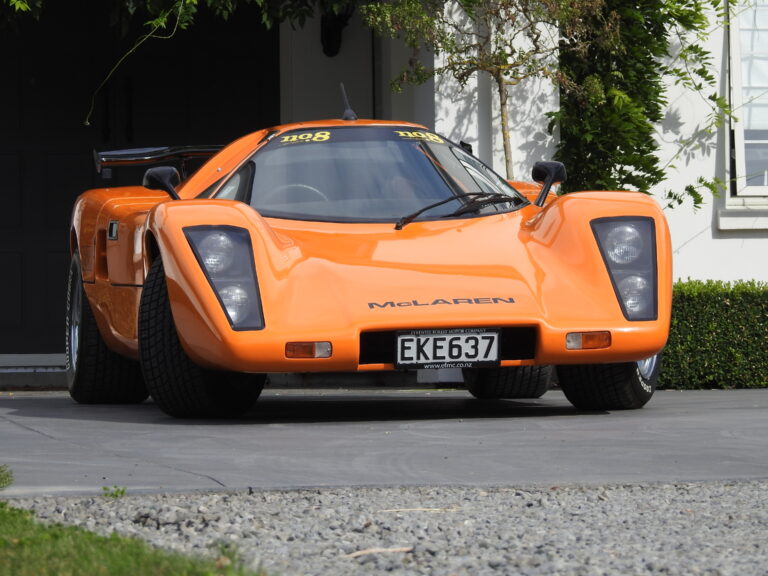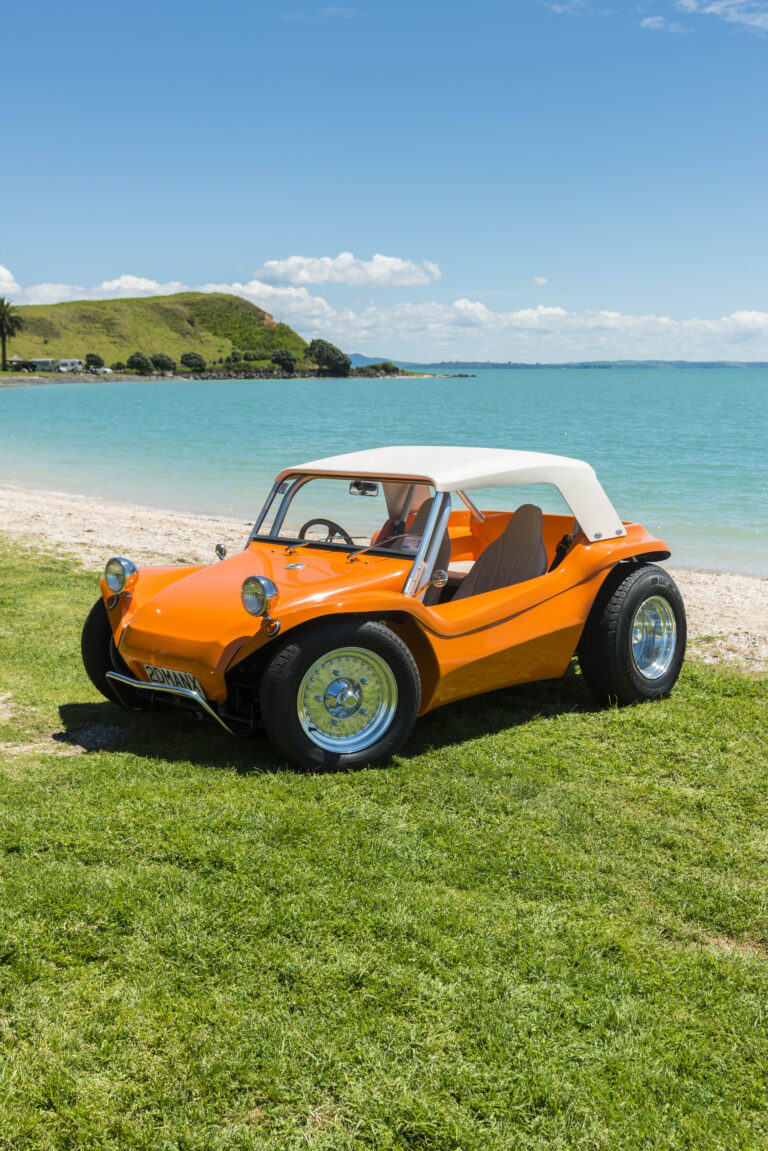data-animation-override>
“Made famous through the cult movie Vanishing Point, the 1970–1974 Dodge Challenger has become a firm favourite for many muscle-car collectors and enthusiasts around the world”
The term ‘muscle car’ has been bandied around for at least five-and-a-half decades, and most of us have a fair idea what it refers to — though a precise definition is subject to varying opinions. However, two things are certain — a muscle car is undoubtedly a high-power coupé that can accommodate more than two people, and the late ’60s and early ’70s was the time when these muscle cars reigned supreme.

Of course, although countries such as Brazil, the UK, and Australia produced their own style of muscle car, the US was, and still is, considered to be the undisputed king of classic muscle-car production, at a time before anyone thought of worldwide oil crises that would lead to massive power reductions in a bid to reduce fuel consumption. Or increased emission controls, as saving the planet became more of a priority for governments than going faster. Or skyrocketing insurance premiums on performance cars — all of which ultimately spelled the end of the classic muscle-car era.
Options and choices

When Dodge officially joined the muscle-bound ranks of Detroit’s Big Three alongside Ford and Chevrolet, during the autumn of 1969, it did so with the 1970 Challenger — a model based primarily on the Plymouth Barracuda E-body platform, but with an extended (by 60mm) wheelbase to allow for additional interior space, it had a genuine trick up its sleeve. Dodge cunningly offered the greatest range of powertrain choices in the business with the new Challenger — a range that spread from the small but durable 3.68-litre (225ci) slant-six engine to the undisputed king of muscle-car powertrains, the mighty 426 Hemi, the justly famous 7.0-litre V8 ‘elephant motor’ — and thus created one of the most storied nameplates in automotive history.

Along with no less than nine available engine options, driveline choices included Chrysler’s TorqueFlite automatic transmission and either a three- or four-speed manual equipped with a Hurst ‘pistol grip’ shifter. Big block V8 Challengers could also be ordered with a heavy-duty Dana 60 limited slip differential.
With all that potential muscle available from the massive options list, when it came to outward looks it was clearly apparent that Dodge’s stylists weren’t about to let their latest creation go unnoticed, and they offered exterior colour schemes that screamed ‘performance’ by providing prospective customers with a series of colour options like Plum Crazy and Hemi Orange, all accented with distinctive bumble-bee stripes. If they thought those in-your-face ostentatious hues weren’t enough to dazzle Dodge’s opponents between sets of traffic lights, owners could add further exterior embellishments via twin-scoop or ‘shaker’ bonnets and rear spoilers.
Race, dragstrip, and silver screen

In 1970 the Dodge Challenger went racing for the first time, as befitted the brand’s performance heritage. In order to meet strict homologation requirements for the Sports Car Club of America (SCCA) Trans-Am racing series, a limited-edition T/A street version of the Challenger was offered to the public.
In 1970, Sam Posey drove the single Trans-Am–racing Challenger. Whilst Posey didn’t win a race in the No. 77 car, he scored enough points to finish fourth in that year’s championship. As well, the Challenger became a popular choice for drag racers, and drivers like Dick Landy and Ted Spehar campaigned their Dodges in the National Hot Rod Association’s (NHRA) new Pro Stock class. Indeed, in 1970 and 1971 Hemi-powered Challengers (and its close relation, the Plymouth Cuda) virtually ruled the class.
At the movies, the big screen played host to a 1970 Challenger R/T that starred in the film Vanishing Point, a high-speed pursuit film (the lead role of renegade driver Kowalski portrayed by Barry Newman) that has since become a cult favourite with muscle-car fans.
Changing times

Designers made subtle styling changes to the Challenger for 1971 — including remodelled tail lights and front grille.
The single tail-light design from 1970 was replaced with two distinct units for 1971, and a new-for-1971 twin-inlet Challenger grille was painted silver on standard models and black on R/Ts. Challenger R/T models also received a set of fibreglass quarter-panel louvres.
As in 1970, a wide range of trim levels, exterior colours and an endless list of striping options to pick and choose from made it possible for Dodge Challenger customers to create their own special car.

The T/A was dropped, however, as the model no longer raced in the Trans-Am series. Unfortunately for the Dodge Challenger there was no light at the end of the tunnel, and its eventual demise was now clearly visible on the horizon. Stringent new EPA emission standards led to some powertrain changes although, thankfully for those searching for performance, a six-pack 7.3-litre (440ci) V8 was still an option, whilst the tarmac-shredding 317kW, 7.0-litre (425bhp, 426ci) Hemi remained on the options list.
As 1972 rolled in, so did escalating insurance premiums and further revisions to EPA emissions mandates — all adding another nail to the coffin of the Challenger and the entire US muscle-car cadre. In addition, the SAE (Society of Automotive Engineers) revised the torque- and power-rating test from a gross to a net calculation — thus, at a stroke, reducing all those much-touted power ratings by as much as 20 to 30 per cent.

As for the Dodge Challenger, the engine options list was now looking rather anaemic with choices limited to just three motors — the wimpy 82kW, 3.7-litre (225ci) slant-six, the barely acceptable 112kW, 5.2-litre (318ci) V8 and the 5.57-litre (340ci) V8 that pumped out a maximum of just 179kW, a far cry from the gas-guzzling glory years. As a further sign of the times, all the engines were designed to run on the then-new unleaded fuel.
More changes to the US auto industry hit home in 1973 as the federal government mandated new bumper impact standards that resulted in the only changes to the Dodge Challenger exterior — 8kph bumpers equipped with large rubber guards that extended out from the bodywork. Under the bonnet, the six-cylinder engine option was dropped, leaving just two V8s — the 5.2-litre and 5.6-litre — both producing the same power as the previous year.

Additional safety equipment led the short list of changes for the 1974-model-year Dodge Challengers, which included lap and shoulder belts equipped with an inertia reel. In addition, there was a federally-mandated seat-belt ignition interlock, which prevented the car from being started if the driver or passenger didn’t buckle up. The engine options suffered once again as the Dodge Challenger offered the 5.2-litre V8 as standard, while a 183kW, 5.9-litre (360ci) V8 replaced the 5.6-litre V8.
Inevitably, five years of Challenger production came to an end in April 1974 — at that time 188,600 examples had been produced.
Top banana

Our featured 1972 Dodge Challenger was first registered in New Zealand back in September, 1987, and this handsome muscle car soon became a regular sight cruising the streets of West Auckland.
Over the years, the Challenger survived a multitude of owners including several members of the American Muscle Car Club — some of whom spent long hours and poured many hard-earned dollars into upgrading and restoring the car. These upgrades included a rebuilt engine and drivetrain, and in 1997 it was fully stripped down to the bare shell, soda blasted and treated to a complete repaint in Top Banana — a factory colour.

The current owner, Nigel Teape, took possession of the Challenger in February, 2010. At that time he’d just sold his 1968 Dodge Charger to friends, Simon and Patty Domett, who also owned a beautiful Plum Crazy big block 1970 Challenger as well as very nice 1972 Dodge Challenger. Not having room in their garage for three cars, and having completed their dream of owning an E-body and a B-body Mopar, it was decided the yellow ’72 Challenger had to go. As Nigel now had space in his garage, he offered to help Simon sell the car whilst undertaking a full bare-metal restoration on a ’74 Challenger at the same time.
Nigel reckons that Simon must have known he would fall in love with the Challenger, as he’d been told to feel free to use it at weekends. No one in their right mind would turn down such an offer, so Nigel obligingly made up a for-sale sign and drove it to several club runs and breakfast gatherings. And, you guessed it , the more time Nigel spent behind the wheel of the Challenger the more potential he saw in it. Eventually an offer was made by a club member for the car, but it was well below the asking price. When Nigel passed the offer on, Simon sounded as if he’d go with that offer despite it being low, saying — “Well, what do you reckon? I want it gone!”
In an instant Nigel jokingly replied — “Mate, I would buy it myself for that!” The rest, you can figure out yourself.
Decision time

Nigel figured that he would drive the Challenger until he had completed the restoration on his other 1974 Challenger and then maybe sell it on again. During the subsequent five years Nigel finished off the ’72 Challenger to a point where he was really happy with it.
Early on he’d taken the car to Rodney Holland of Rodney’s Restorations for a routine cut and polish, the application of R/T stripes along the car’s flanks and for the doors to be properly aligned. Rodney called Nigel after a few days and asked what his plans were for the car — a call that seemed so portentous Nigel panicked, thinking that Rodney had discovered hidden rust or, worse still, Dodge Coronet parts welded in places they shouldn’t be. Luckily for Nigel, the news was all good. From what Rodney could see, the Challenger still retained its original floor pan and panels, there was no rust and no sign of any accident damage — in fact, Nigel’s car boasted one of the better Challenger bodies Rodney had seen.
With that expert assessment ringing in his ears, Nigel made a quick decision to keep the banana-yellow Challenger and sell off his 1974 project — and, in doing so, save himself a whole lot of work and money finishing off the later-model car. Nigel had no problems selling the project to a friend and fellow club member, Brent Marsh, who has since completed the build and now the fully restored, ’74 Challenger keeps Brent’s 1969 Mustang company in the garage.
Upgrades

When Nigel first purchased the yellow Challenger from Simon, it only needed a few finishing touches — including the fitment of new badges plus bonnet black-out and side stripes. The car’s V8 ran very well and, following a carburettor and intake manifold change, a dyno-tune session recorded a healthy 243kW at the rear wheels. Wanting a bit more of a throaty sound, Nigel changed the exhaust to include a TTI exhaust system with X-pipe and Flowmaster mufflers. He also decided to upgrade the factory handling, and fitted a larger front torsion bar, an anti-sway bar and a set of Koni adjustable gas shocks, which make a huge difference on corners.

The Challenger’s interior was in great original condition with the exception of a cracked dash top, which Nigel has now had restored. He also managed to track down a centre console, an item that was missing when he bought the car.
To date, Nigel has been on many family outings with his wife Maria and kids, Max and Michaela, who love travelling in the Challenger. They have attended three Beach Hops, the Easter Ohakune run with the AMCC (American Muscle Car Club) at Taupo several times, and the Dodge has been around Hampton Downs a few times. As you would expect of a classic muscle car, the Challenger has been drawn to the dragstrip many times — Nigel’s best time down the Meremere dragway being 13.5 seconds at 106mph (170.59kph).

Nigel admits that he initially thought the car’s bright banana-yellow colour was very loud, but after applying the contrasting black side stripes, black on the bonnet, and blacking out the grille, he reckons it looks fantastic, and he wouldn’t have it any other colour. To this day he has not seen another Challenger the same shade of yellow and says, “It’s quite funny at car shows, the bugs must think it is a giant sunflower as it will attract all sorts of insects when all the surrounding cars have none on them!”
Plans for the future? The Dodge is finally just how Nigel wants it, and he plans to do a whole lot more cruising in it, especially with the price of fuel being so low at the moment, although he jokingly notes that the price of rear tyres hasn’t come down as well — the rears don’t tend to last that long, as the Challenger burns plenty of rubber as well as petrol. Looking back to the 1970s, it’s those factors which lead to the demise of such great cars — how things have changed.
1972 Dodge Challenger
- Engine: Chrysler big block V8
- Capacity: 7.3 litres 440ci
- Bore/stroke: 109.7/95.25mm
- Valves: Two valves per cylinder /OHV
- Comp ratio: 10.5:1
- Max power: 243kW as featured
- Fuel system: Four-barrel carburettor
- Transmission: Chrysler A833 four-speed manual
- Clutch: McLeod RSP twin-plate
- Differential: Chrysler 8¾ Sure-grip with trip-friendly 3.23 ratio
- Wheels F/R: Magnum 500 15×8-inch / 15×10-inch
- Tyres F/R: BF Goodrich 225/60-15-inch / 255/50-15
- Suspension F/R: Independent via torsion bar, trailing link, wishbones and anti-roll bar/ live axle, semi-elliptic leaf springs
- Steering: Recirculating ball
- Brakes: Power-assisted front disc brakes, drum rear
Dimensions
- Overall length: 4859mm
- Width: 1938mm
- Height: 1293mm
- Wheelbase: 2794mm
- Front track: 1516mm
- Rear track: 1565mm
- Kerb weight: 1436kg
Performance
- Max speed: 240kph (estimated, as featured)
- 0-100kph: 6.2 seconds estimated, as featured)
- Standing 1/4 mile: 13.5 (as featured)
- Build date: May 4 at Dodge Main Plant, Hamtramck, Michigan, US
- Factory colour: Top Banana
- Factory options: Bucket seats, air conditioning, Rallye dash, R/T bonnet


































